
A healthy lifestyle helps bring you balance and supports your academic success. Nutritious eating, physical activity and restful sleep all contribute to healthy living. We recommend making small changes to integrate healthy habits into your daily life.
2-Week Sample Menu for Living On-Campus
Check out these microwave/budget-friendly menu options, grocery list, and campus resources and you'll have everything you need to stay fueled during the semester. More recipes are available at livewellfau.weebly.com/recipes.
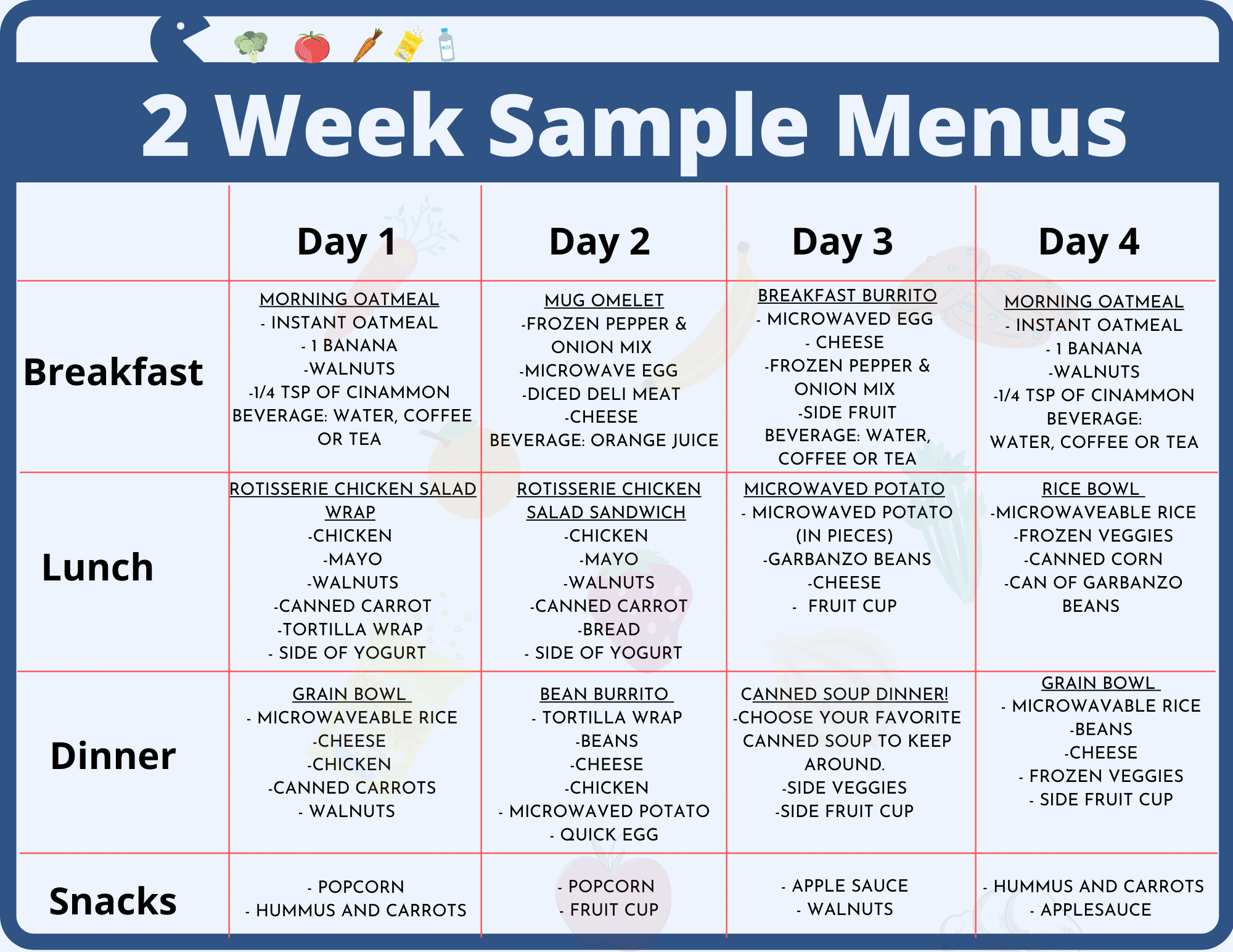
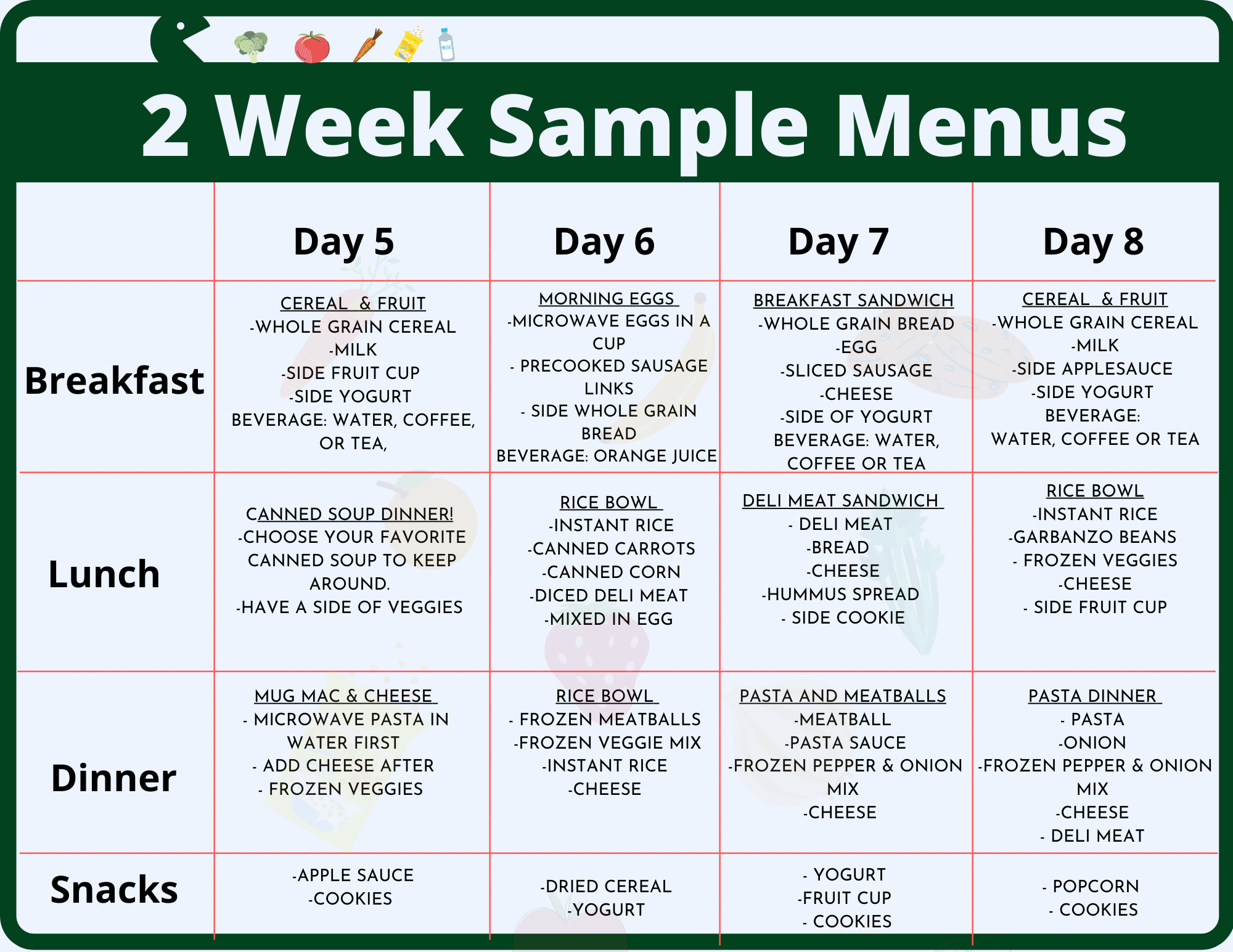
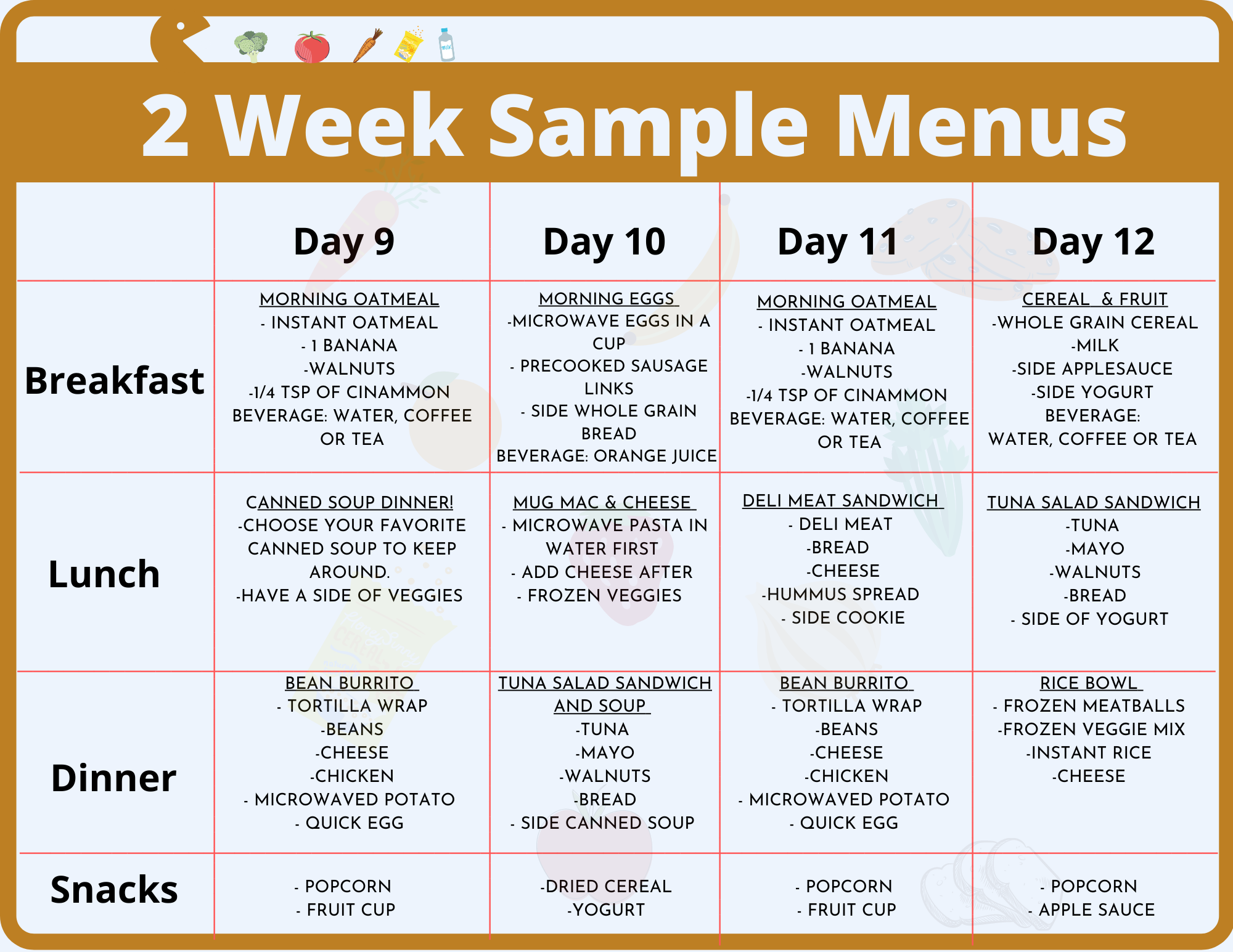
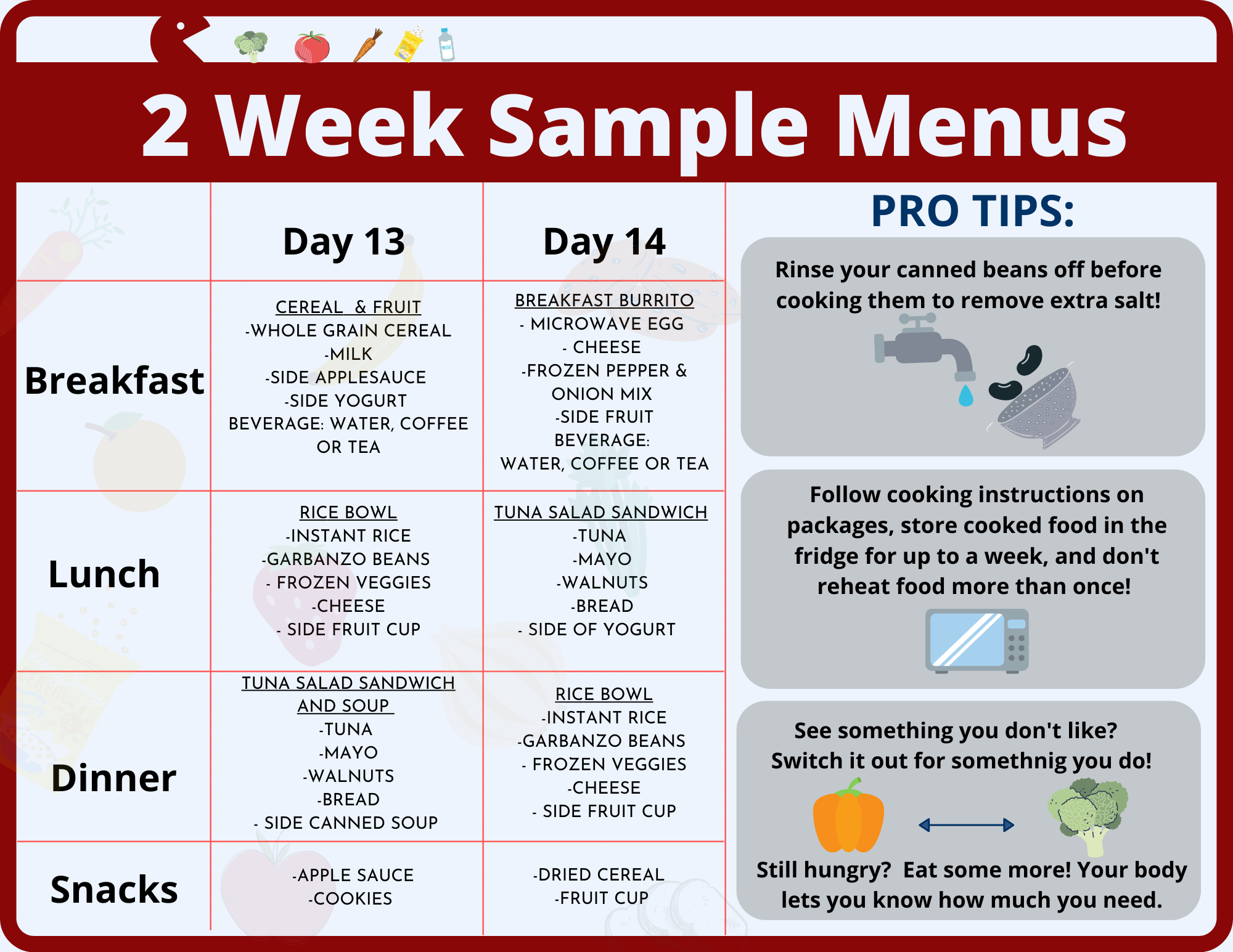
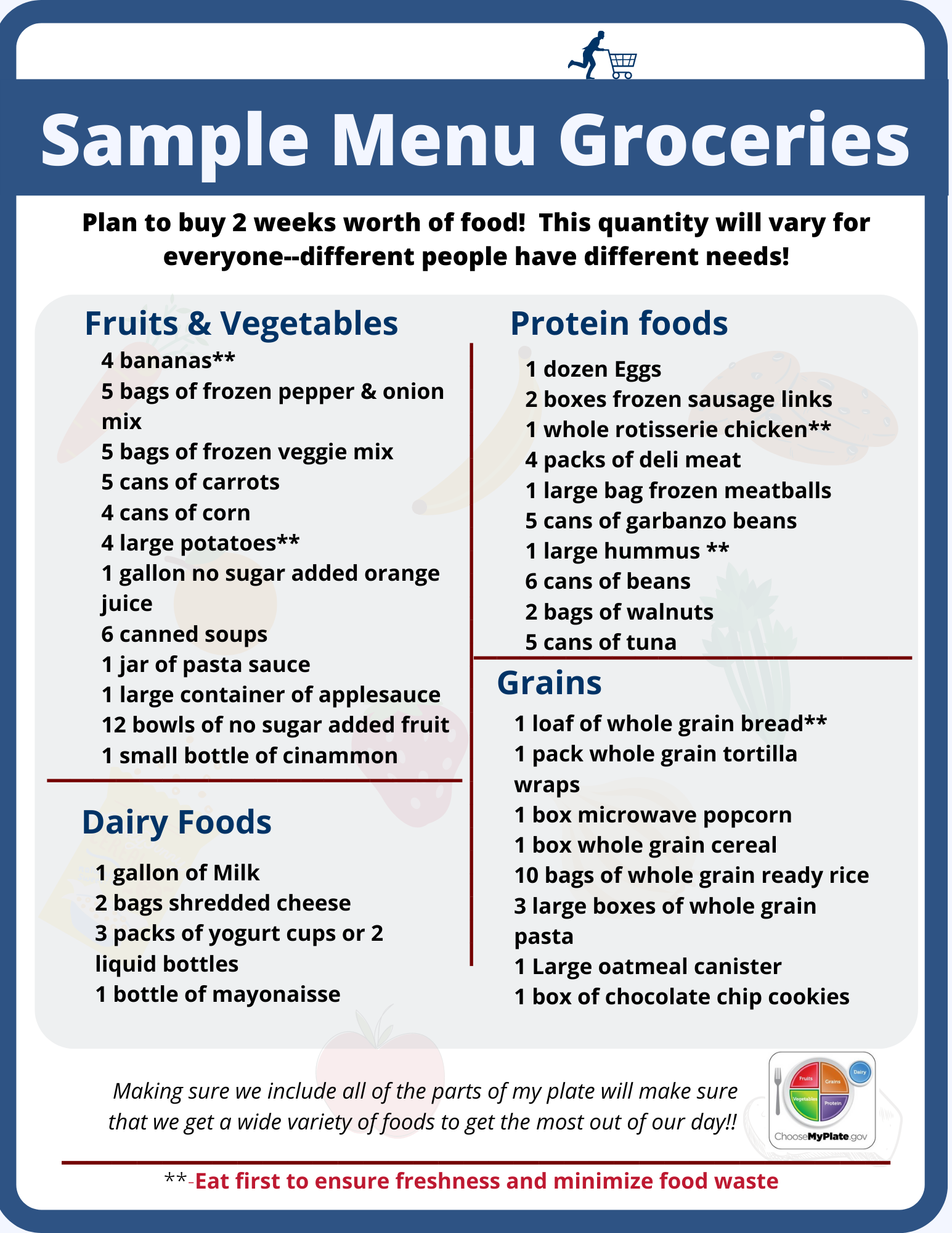
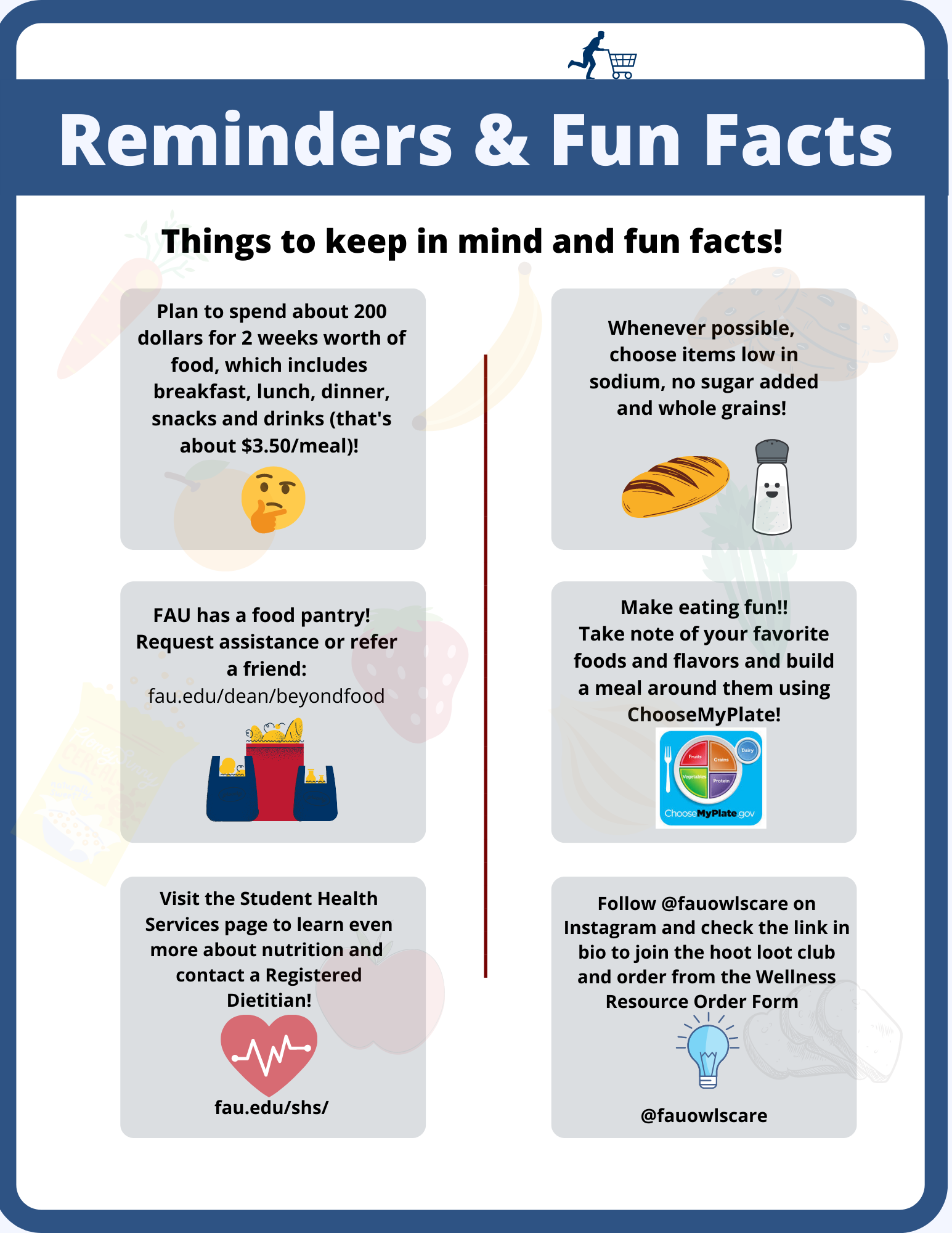
Nourishing your body with a variety of foods gives you the energy to do everything on your to do list.
It seems like everywhere we look; we're bombarded by nutrition messaging. But as you probably know, some sources are more credible than others. Read on to find evidence-based nutrition information from your FAU registered dietitian.
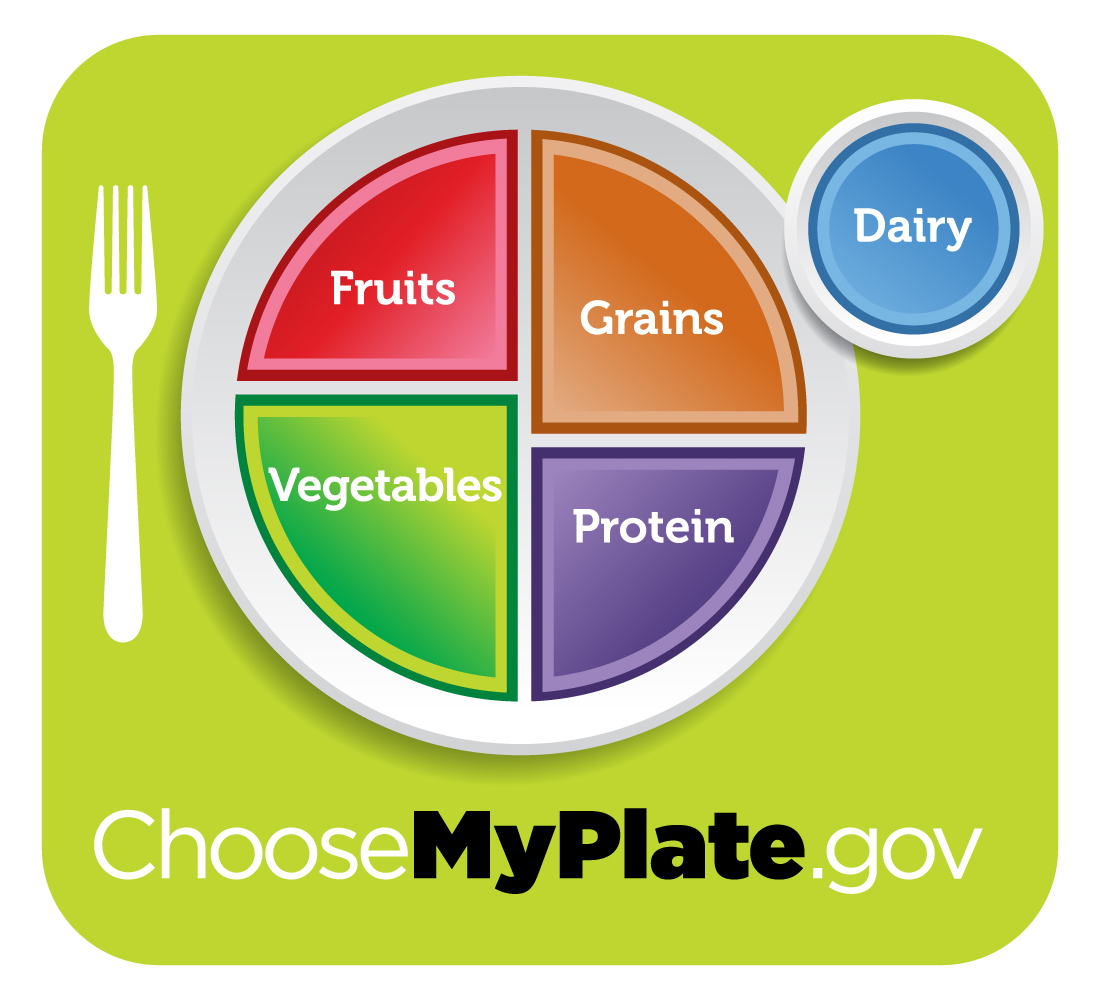 Visit ChooseMyPlate.gov to learn more about nutritious eating, or visit the next tab.
Visit ChooseMyPlate.gov to learn more about nutritious eating, or visit the next tab.The government “MyPlate” offers a visual reminder of the components of a balanced meal. Incorporating foods from different food groups (such as fruits, vegetables, grains, dairy, protein, and oils) into your meals can help you meet your nutrition needs. Key takeaways from MyPlate include:

Everyone’s body is different, so everyone has different nutrition needs. Read to figure out how to eat the right amount for you.
Eating disorders are potentially life-threatening conditions that create unhealthy relationships with food.
Need more nutrition-related information? Look no further!
Physical Activity provides an unlimited amount of benefits to the human body. Some of these benefits include:
You can get all of the benefits listed above by simply being active in ways that you enjoy. We want to take the focus off a "typical" fitness routine and reframe the way you see exercise. Any activity that gets your heartrate up and works your muscles counts as exercise. Need help coming up with ideas on how to get moving? Try out one or more of following activities and pay attention to how it makes you feel!
Do you feel accomplished? Did your mood improve? Are you feeling more energized? Great! Tell us what activities you tried on social media or recommend your favorite ways to move so we can add them to the list!
For the average college students, 7 to 9 hours is the recommended amount of sleep you should get each night. While you may feel like you can operate off fewer hours of sleep, does not necessarily mean that you are functioning at your highest capacity. Getting enough ZZZ’s can be challenging but the benefits of sleep are numerous:
A good night’s sleep can be affected by variety of influences in your environment. If you are having trouble sleeping at night, consider each of the following:
All of these variables play a role on the quality of sleep you get and your ability to easily fall asleep. Want to learn more? Check out the National Sleep Foundation website and find out everything you wanted to know about sleep and its impacts.
**Owls Care Health Promotion and FAU are not responsible for the content shared by these websites.
Now click the next tab to find out how you can make positive changes in each area for a better night’s sleep.
Find out what kind of sleeper you are by taking this short quiz!
While getting 7 to 9 hours of sleep is the preferred recommendation, we understand that it does not always happen. On those nights you just don’t get enough sleep and are struggling to get through the day, consider a nap.
The perfect nap is 20 to 30 minutes in the middle of the afternoon, preferably laying down or lounging in a cozy chair.
If you are on campus and want to power up with a nap, check out our Wellness Map with some great, student recommended locations to take a break and catch some ZZZ’s.
A viral infection of your nose and throat (upper respiratory tract)
Also known as influenza, it is a viral infection that attacks your respiratory system (nose, throat, and lungs)
Can be lead to imbalances in neurotransmitters in your brain, specifically higher levels of GABA, which slows down neurons and can result in poorer attention spans